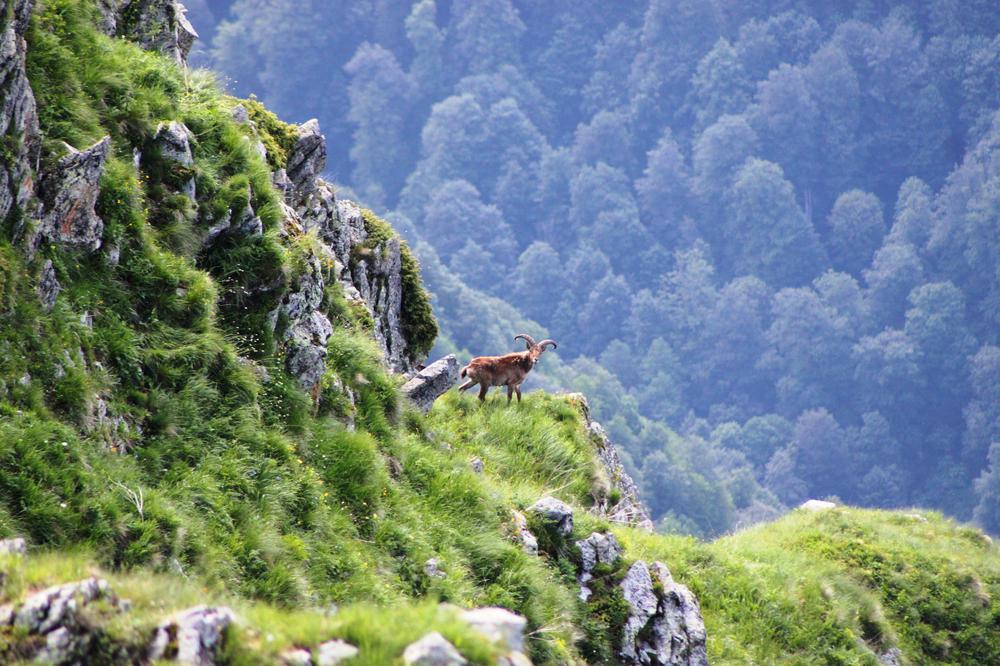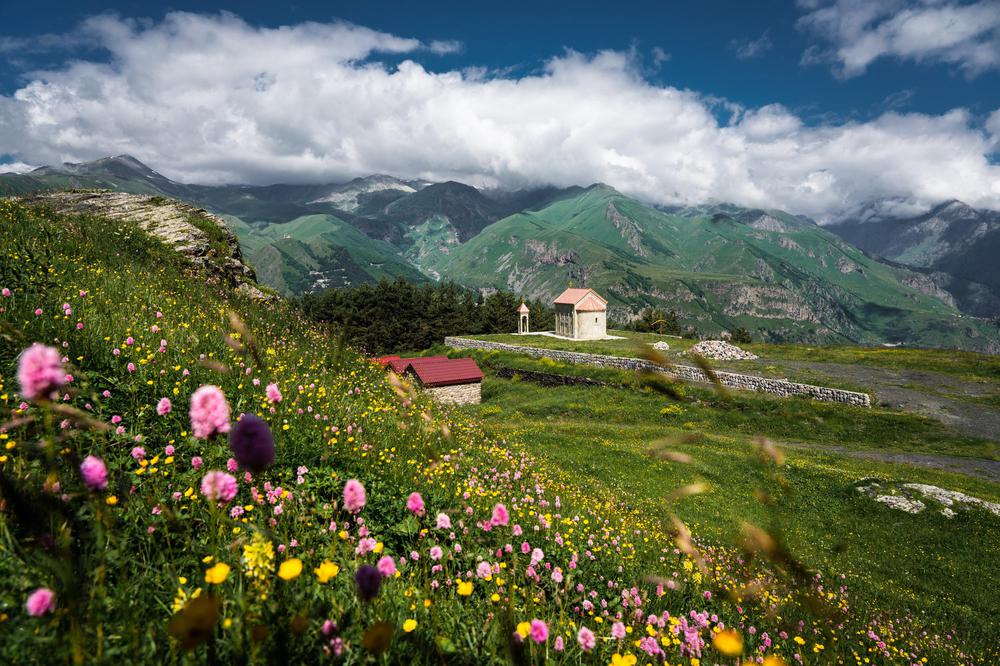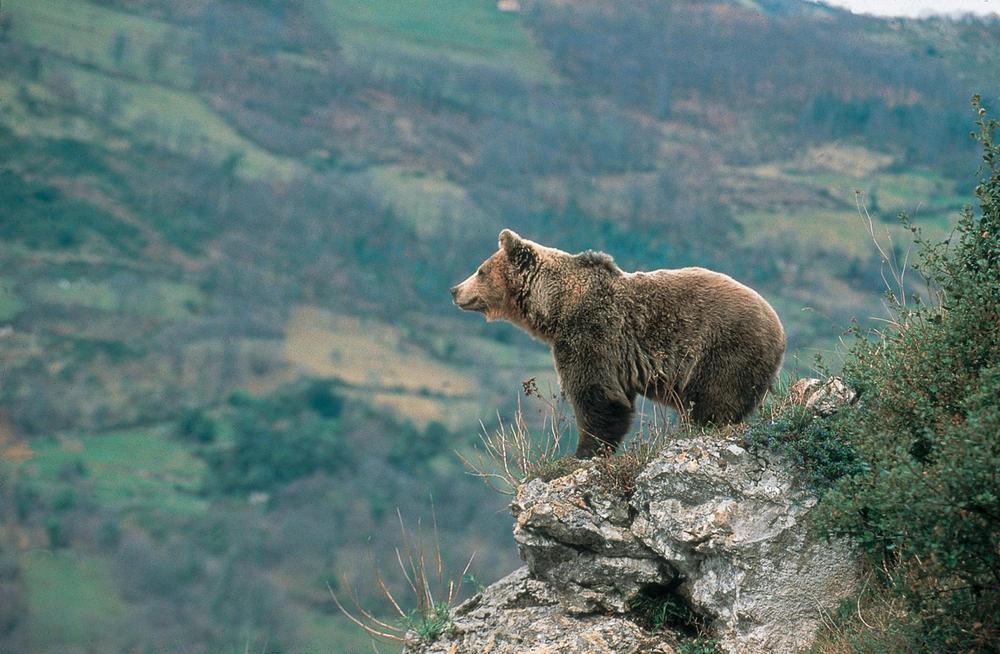Georgia, a country graced with a remarkable tapestry of geographical and ecological diversity, stands as a beacon of biodiversity at the juncture of Eastern Europe and Western Asia. This land, encompassing the lush Black Sea coast, the enigmatic Colchic rainforests, the rugged terrain of the Caucasus Mountains, and the semi-arid landscapes of its eastern plains, is a mosaic of habitats, each with its unique set of flora and fauna. Georgia's biodiversity is not just a natural treasure but a cornerstone for the burgeoning sectors of eco-tourism and conservation. These natural resources attract nature enthusiasts and researchers worldwide, contributing significantly to the country's cultural and ecological heritage. This article aims to meticulously explore the rich biodiversity of Georgia, focusing on the myriad of plant and animal species that adorn its landscapes. By shedding light on these natural wonders, the article underscores the importance of conservation efforts and sustainable tourism practices that protect and celebrate Georgia's unique natural heritage.
The Diverse Landscapes Of Georgia
Georgia's geographical tapestry is as diverse as it is dramatic, directly influencing the richness of its biodiversity. Each region, from the balmy Black Sea coast to the rugged Caucasus Mountains, contributes uniquely to the country's ecological variety.
The Black Sea coast, stretching approximately 310 kilometers (192 miles), is characterized by its humid subtropical climate. This region is a haven for a variety of ecosystems, including sandy beaches, pebble coastlines, and coastal marshes. The unique climate here fosters a rich variety of both flora and fauna, creating a verdant landscape that stands in stark contrast to other Georgian regions.
Inland, the Colchic rainforests and wetlands take center stage. These areas, receiving high levels of precipitation annually, are remnants of ancient forests that once covered much of the region. The Colchic rainforests are renowned for their biodiversity, hosting a plethora of endemic species. The wetlands, meanwhile, serve as crucial habitats for migratory birds and other wildlife, forming an integral part of the regional ecosystem.
The majestic Caucasus Mountains, forming Georgia’s northern border, offer a different environmental canvas. Ranging in altitude from about 600 to over 5,000 meters (1,969 to 16,404 feet), these mountains harbor distinct climatic zones, which, in turn, support diverse flora and fauna. The lower mountain slopes are covered with deciduous forests, transitioning to coniferous forests and then to alpine and subalpine meadows as the elevation increases. This vertical zonation contributes to the high levels of species diversity and endemism found in the region.
To the east, the semi-deserts of Georgia present a stark contrast. These arid landscapes, particularly around the Vashlovani National Park, are characterized by their sparse vegetation, adapted to the dry climate. Despite the harsh conditions, these semi-deserts support a unique array of biodiversity, including several rare and endangered species, underscoring the ecological versatility of Georgia.
The interplay of these diverse landscapes in Georgia creates a mosaic of habitats, each contributing uniquely to the country’s overall biodiversity. This geographical diversity not only shapes the ecological character of the region but also makes Georgia a compelling destination for eco-tourists and nature enthusiasts.
Flora Of Georgia
Georgia's flora, as varied as its landscapes, offers a window into the country's ecological diversity. From the lowlands and coasts to the high mountain ranges and semi-desert areas, each region boasts its unique botanical treasures.
Lowland And Coastal Flora
The Colchic rainforests and wetlands, a significant part of Georgia's lowland flora, are a botanical wonder. These regions are home to a wide array of species, many of which are endemic. For instance, the Colchis Boxwood and the Pitsunda Pine are unique to this area, underscoring its global ecological significance. The wetlands, too, contribute significantly, hosting various aquatic plants that provide critical habitats for numerous bird and insect species. These ecosystems play a vital role in maintaining the ecological balance, offering a natural haven for biodiversity.
Mountain Flora
Ascending to the alpine and subalpine zones of the Caucasus Mountains, the flora transforms dramatically. These higher elevations are adorned with a diverse range of plant life, including the Caucasian Rhododendron and Georgian Snowdrop, both endemic to this region. The alpine meadows, particularly vibrant during spring and summer, become a kaleidoscope of colors, attracting tourists and nature enthusiasts. The unique botanical composition of these zones not only enhances the scenic beauty of the mountains but also supports a variety of wildlife, playing a crucial role in the mountainous ecosystem.
Flora Of The Semi-Desert Regions
In the semi-desert regions, especially around Vashlovani National Park, the flora is markedly different, adapted to arid conditions. Plants like the drought-resistant Georgian Oak and various species of juniper are common. These plants have evolved to survive with minimal water, demonstrating the remarkable adaptability of nature. The unique vegetation of these semi-deserts adds to the ecological diversity of Georgia, offering a stark contrast to the lush greenery found in other parts of the country.
Each of these floral regions contributes uniquely to Georgia's biodiversity. The lowland and coastal flora provide lush, green landscapes, the mountain flora offers seasonal spectacles, and the semi-desert flora showcases the resilience of life in arid conditions. Together, they paint a diverse botanical picture of Georgia, enhancing its appeal as a destination for nature-based tourism and ecological research.
Fauna Of Georgia
Georgia's fauna, as diverse and vibrant as its flora, reflects the rich ecological tapestry of the country. From majestic mammals and diverse bird species to unique aquatic life and rare reptiles and amphibians, Georgia's wildlife is a crucial component of its natural heritage.
Mammals
In the Western Caucasus, large mammals such as the Caucasian Leopard, an emblem of wildlife conservation in the region, roam the rugged terrain. This elusive big cat, along with other species like the East Caucasian Tur and the Caucasian Red Deer, symbolizes the rich mammalian diversity of the area. However, many of these species are under threat due to habitat loss and poaching, placing a significant emphasis on conservation efforts. The protection of these mammals is not just about preserving individual species; it's about maintaining the ecological balance of the region.
Avian Species
Georgia is a haven for birdwatchers, with areas like the Kolkheti National Park serving as prime spots for observing a wide variety of avian life. The country's position along major migratory routes adds to its ornithological significance. Species such as the Caucasian Black Grouse and the Griffon Vulture, along with numerous migratory birds, are a testament to the rich avian biodiversity. Understanding these birds' migratory patterns is crucial for their conservation and offers valuable insights into global ecological trends.
Aquatic Life
Georgia's rivers and streams are teeming with a variety of fish species, making them an important aspect of the country's aquatic biodiversity. The Tergi River and other water bodies are home to species like the Caucasian Barb and Brown Trout. These ecosystems not only contribute to the country's biodiversity but also support local and eco-tourism economies, particularly in angling and recreational fishing sectors.
Reptiles And Amphibians
The Caucasus Mountains are a hotspot for herpetological diversity, with several species of reptiles and amphibians calling this region home. The endemic Caucasian Salamander and the rare Armenian Viper are among the notable species found here. Conservation efforts for these creatures are crucial, as they play an integral role in the ecological balance and are indicators of the overall health of the environment.
Conservation And Eco-Tourism
In Georgia, the intertwining of conservation and eco-tourism plays a pivotal role in sustaining and showcasing the country's natural heritage. The government and various non-governmental organizations have initiated numerous conservation efforts, recognizing the ecological, economic, and cultural importance of Georgia's biodiversity.
Conservation Efforts In Georgia
Conservation in Georgia is multifaceted, involving habitat preservation, species protection, and environmental education. The government, in collaboration with international organizations, has been working towards the establishment of protected areas, wildlife rehabilitation programs, and anti-poaching laws. These efforts are crucial in safeguarding species at risk, such as the Caucasian Leopard and the Georgian Oak, and in preserving the unique ecosystems they inhabit.
Role Of National Parks And Reserves
National parks and reserves are at the forefront of conservation in Georgia. The country boasts several protected areas, including the Borjomi-Kharagauli National Park, one of the largest in Europe, and the Vashlovani National Park, known for its unique semi-desert ecosystem. These parks serve as sanctuaries for numerous species and play a vital role in research and conservation efforts. They are also instrumental in preserving the natural landscapes, which are a significant part of Georgia's cultural identity.
Impact Of Eco-Tourism
Eco-tourism in Georgia has grown significantly, driven by the global demand for sustainable travel experiences. This form of tourism not only generates revenue for local communities but also raises awareness about the importance of conservation. By engaging tourists in wildlife watching, guided nature walks, and educational programs, eco-tourism fosters a deeper appreciation and understanding of Georgia's natural environment. Additionally, it provides economic incentives for local communities to participate in and support conservation efforts, creating a symbiotic relationship between tourism and environmental stewardship.
The integration of conservation and eco-tourism in Georgia illustrates a proactive approach to environmental preservation. By protecting its unique flora and fauna, and by offering sustainable tourism opportunities, Georgia not only safeguards its ecological treasures but also shares its natural beauty with the world, benefiting both the environment and local communities.
The Role Of Research And Education
Understanding and preserving Georgia's rich biodiversity is not solely the responsibility of conservationists and policymakers; it fundamentally hinges on scientific research and education. These two elements play a crucial role in comprehending the complexity of Georgia's ecosystems and in fostering a culture of conservation.
Importance Of Scientific Research
Scientific research is the cornerstone of effective conservation strategies. In Georgia, research conducted by local and international scientists provides invaluable insights into the unique characteristics of the region's flora and fauna. Studies on species distribution, habitat requirements, and the impacts of climate change are essential for informed decision-making and policy development. For instance, research on the Caucasian Leopard's habitat preferences and threats has been instrumental in shaping conservation actions and habitat management plans. Similarly, botanical studies in the Caucasus Mountains have led to a deeper understanding of plant species' adaptation and survival strategies, informing conservation and restoration efforts.
Educational Initiatives And Public Awareness
Alongside research, education plays a vital role in conservation. Educational initiatives targeting various age groups and communities help in building a strong foundation of environmental awareness. Programs in schools, including field trips to national parks and interactive workshops, are crucial in cultivating a sense of responsibility towards nature from a young age.
Public awareness campaigns are equally important. They involve various activities, such as community seminars, media campaigns, and eco-tourism events, aimed at informing the public about the significance of biodiversity and the need for its protection. These campaigns also highlight the role individuals and communities can play in conservation efforts, promoting sustainable practices that benefit both the environment and local livelihoods.
Conclusion
Georgia, with its kaleidoscope of landscapes and ecosystems, stands as a testament to the extraordinary richness of our planet's biodiversity. From the lush Colchic rainforests and vibrant Black Sea coast to the majestic Caucasus Mountains and the stark beauty of its eastern semi-deserts, Georgia’s natural tapestry is not only a source of national pride but also of global ecological significance. The diversity of its flora and fauna, some endemic and many rare, underlines the country’s vital role in the preservation of global biodiversity.
Looking ahead, the future of eco-tourism and conservation in Georgia appears promising yet challenging. As eco-tourism continues to gain traction, it brings both opportunities and responsibilities. The growth in this sector must be carefully managed to ensure that it supports conservation efforts, benefits local communities, and promotes sustainable interactions with nature. Conservation, an ever-evolving field, requires constant adaptation to new challenges, such as climate change and habitat loss. The ongoing commitment to protecting Georgia's natural environment is imperative for maintaining the ecological balance and ensuring the survival of its diverse species.

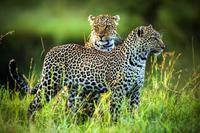 Caucasian Leopard Trails
Caucasian Leopard Trails
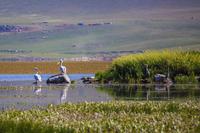 Javakheti Plateau Birds
Javakheti Plateau Birds
 Brown Bear Habitats in Georgia
Brown Bear Habitats in Georgia
 Wildlife Watching in Lagodekhi Reserve
Wildlife Watching in Lagodekhi Reserve
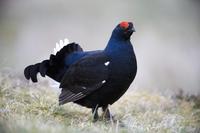 Endemic Species in Vashlovani National Park
Endemic Species in Vashlovani National Park
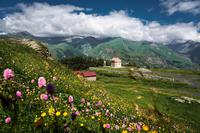 Mountain Flowers of Georgia
Mountain Flowers of Georgia
